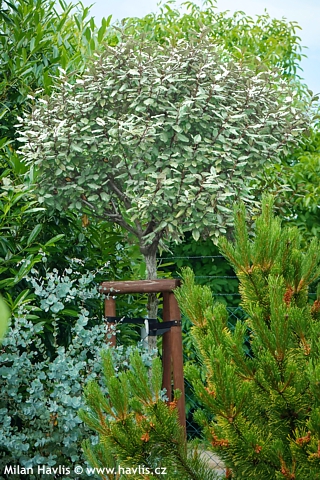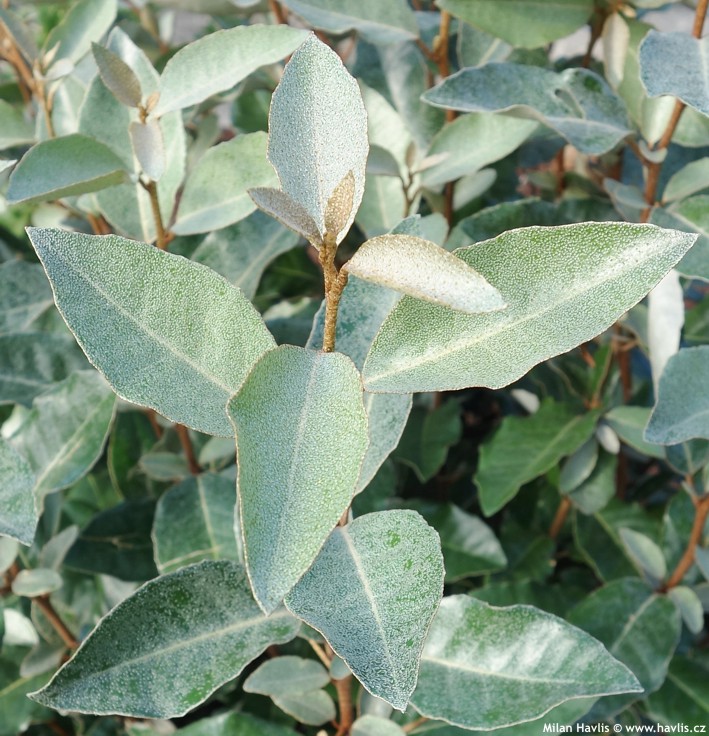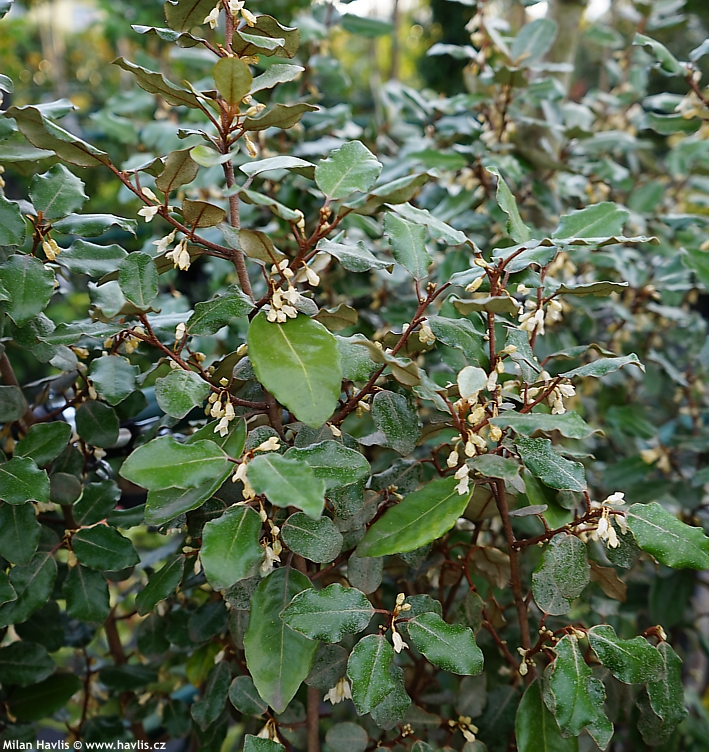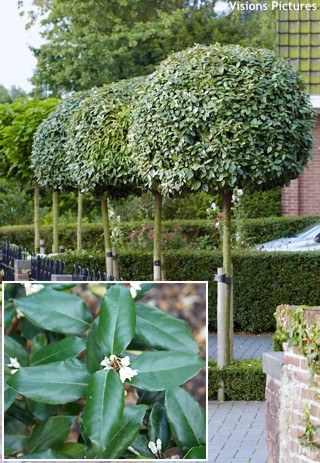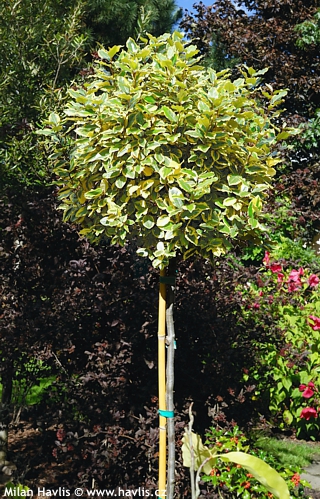Elaeagnus x ebbingei 'COMPACTA' evergreen silverthorn - STANDARD TREE


Elaeagnus
Evergreen silverthorn is a natural hybrid of e. macrophylla with large, evergreen, rather rounded leaves and vigorously growing e. pungens with narrower foliage and thorns. It is sometimes called Russian olive which is not correct as this name is already used for its deciduous sister e. angustifolia. It is described to have been discovered by a Dutch horticulturist Simon Doorenbos (1891-1980) who named it after another Dutch botanist J.W.E. Ebbinge in 1929. However, many years later it was pointed out that a Swiss botanist Camille Servettaz (1870-1947) found this mutation, too, and named it elaeagnus x submacrophylla already in 1909. In spite of that, the whole horticultural world still sticks to e. x ebbingei and we do, too, if you don’t mind.Apart from the foliage this plant is also interesting for its almost invisible flowers. They are tiny and appear from late summer to early autumn. Being hard to see does not mean they are insignificant - their perfume is the essential attribute. They have a lovely, sweet fragrance, especially in late afternoon and the evening. After mild winters they are followed by edible fruit in spring. They are 1,5cm long with a small pit, oval, deep red, and taste like sweet morello cherries. It is best to let them ripen well which is when they begin to fall.
Evergreen silverthorn is also demanded as a standard tree which offers an instant and evergreen screening that blocks the unwanted views from neighbouring windows. It also serves as a handsome, small, specimen, evergreen tree if regularly trimmed. Compacta is a fast grower making 30-60 cm annually, still keeping a dense and compact habit.
You can prune it in almost any manner from spring till midsummer. Old plants can be rejuvenated by cutting into old wood in spring. It is soil adaptable but needs mulching in our climate to protect surface roots from dry frost. It is reasonably hardy yet we suggest planting it in winter shade in colder regions. Even after severe frosts it always re-sprouts from healthy wood and makes long new branches. Avoid heavy clay, boggy or wet conditions. Compacta is hardy to min. -23°C (USDA zone 6) but may withstand a few degrees lower with some minor leaf damage. In frost-free periods provide extra watering if the ground is not frozen.
Last update 09-01-2021
Goods are shipped all over Europe. For Russia and U.K. and for further details please read about SHIPPING OPTIONS HERE.
Are you interested in a serious discount for orders NOV-FEB? Check your options here.
THE PRICES INCLUDE VAT of 15%. For quick conversion you can use 1 CZK = approx. 0.04 EUR
- STANDARD QUALITY - Plants of this group are 1st class quality with number of branches and overall density adequate to their size and age, considering they were container grown.
- DE LUXE QUALITY - This label guarantees a luxurious quality of manually selected plants that, compared to their height and age, are exceptionally dense and beautiful.
- EXTRA - These plants are usually mature and bigger specimens with exceptional overall appearance.
- STANDARD (as described in the plant form) means a tree with a trunk of 190-210 cm and a crown at the top, unless specified differently. The commercial size for trees is their girth measured in the height of 1m from ground.
- HOBBY - These plants are of the same quality as our standard-quality plants but younger and therefore cheaper.
- SHRUB - a woody plant with branches growing bushy from the ground level.
- HALF-STANDARD or MINI-STANDARD - a small tree with shorter trunk, its size is usually specified.
- FEATHERED - These are trees with branches growing already from the base of the trunk and up along the stem.
- GRASSES and PERENNIALS - Sizes given usually read the diameter of the pot or the clump, as specified.












